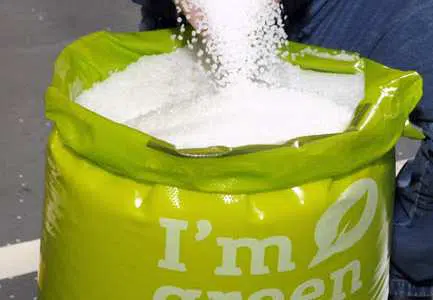The world of professional packaging is forever changing, but one thing seems to have remained the same for decades: the raw materials used for producing pallets, containers and distribution boxes. Virgin and recycled PPE and HDPE are the two key materials used by all major producers of packages for various industries. But things are about to change quite soon.
A Victory for Research and Development
Although it is not obvious, research and development teams are busy working to discover new packaging materials, which will reduce waste and will have a lesser impact on the environment. A key development in this direction is already in use: bioplastics.
Bioplastics are a form of plastics developed from natural, biological sources – biomass. The most recent applications for this new packaging material are in disposable eating utensils and food containers. Recently, the famed Seaworld aquarium and entertainment park has decided to allow only bioplastics food containers in its premises and the clients are reportedly happy with this decision.
The Advantages of Bioplastics
At Logistic Packaging, we are lively interested in any new development in our industry. And we are more than happy to share every piece of useful information we glean with our clients and followers. In our opinion, bioplastics has the potential to become the raw material of the future, of course, with further refining and development.
As things stand now, these are the key benefits of bioplastics which we have identified:
1. Important Decrease of Waste at Global Level
With respect to bioplastics, the key benefit is that it makes use of natural materials, most of them agricultural and food wastes. The most frequently manufactured types of bioplastics originate from:
- Starch
- Cellulose
- Proteins (especially wheat glucose)
- Lipids (fats and oils)
Thus, bioplastics help reduce the overall produce wastes, by turning them into a useful raw material. In this manner, instead of exploiting the already dwindling resources of the planet, we can create a sustainable packaging material which contributes to a cleaner world.
2. It Is Biodegradable
As a direct consequence of the ingredients used for its manufacturing, bioplastic packaging materials will not become a source of waste and pollution at the end of their useful life. They are biodegradable, even if it does take years for the material to be absorbed into the environment. Alternately, end-of-life items made of bioplastic can be sent to a special processing plant which turns them into compost.
3. A Huge Potential Production Capacity at Global Level
Shortage is one of the key elements which define the sustainability of any new product or technology. In the case of bioplastics, there is no shortage of raw materials in sight for a long time to come. A study prepared way back in 2014 by the European Institute of Bioplastics and Biocomposites estimated that by 2018 – just next year – the global production capacity of bioplastics will reach 6.73 million tons, as follows:
- 75.8% of production capacity in Asia;
- 12.2% in South America;
- 7.6% in Europe;
- 4.3% in North America;
- 0.1% in Australia and Oceania.
The percentages are not surprising, and they offer interesting development directions for a region long plagued by political instability and economic crises, namely South America.
4. Cheaper to Manufacture Than Cardboard Based Packaging
Unreliable and unhygienic cardboard packaging materials are still around because they are cheaper compared to plastic packages. Bioplastics will hopefully put these packaging materials out of use at global level, by this specific principle. Manufacturing data supplied by various producers of bioplastics show that this material has lower production costs than cellulose based packages. Therefore, the final sale price of the material will also feature below the price for cardboard and paper based packages.
5. An Ideal Material for Visually Appealing Packages
The marketing of products takes everything into account at the present: not only the primary packaging of the product itself, but also the display cases and trays where they are placed in stores.
From this point of view, bioplastic is a great material to be used for display packaging: its transparent and shiny finish offers many potential applications and customizations for the promotion of the brand image.
While these are theoretical possibilities at the present, the Logistics Packaging team is certain that no efforts will be spared worldwide to make them come true. And when they do, we promise to be one of the early adopters of this innovative packaging material.
 International - English
International - English




 United Kingdom -
United Kingdom -